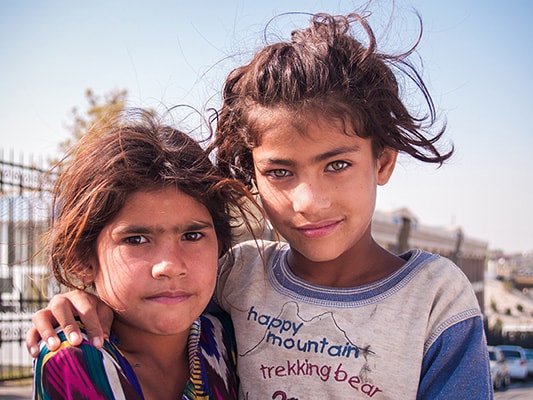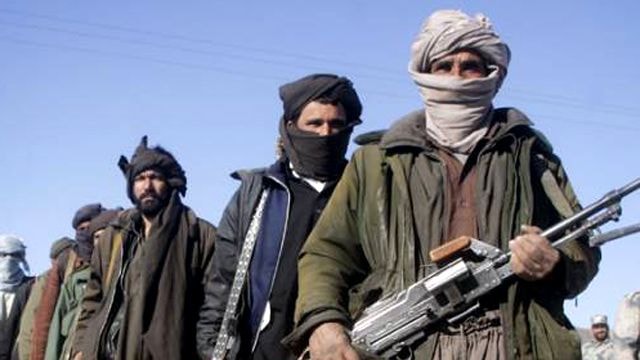Afghanistan: The forgotten crisis
(Baonghean) - Afghanistan is facing a complex humanitarian crisis, arising from many challenges over the past four decades.
The story of a vulnerable Afghanistan begins in the late 1970s. Although the Afghan people were deprived and relatively dependent on foreign aid, they were a resilient nation. There was virtually no migration or food insecurity. Afghans rarely left their villages because of their peaceful and stable lives. Afghanistan was self-sufficient in agriculture and used to export many goods to other countries.
 |
| Many Afghan migrant children do not have the opportunity to go to school or receive proper health care. Photo: BEO. |
Pursuing a “win-win” foreign policy and promoting regional economic cooperation to ensure prosperity for the poor and underdeveloped regions of South and Central Asia is the policy pursued by the Afghan government. At that time, this nation understood that in order to reduce poverty and alleviate natural disasters such as floods, droughts, and earthquakes, they needed to continuously grow their economy, while simultaneously strengthening and maintaining good relations with their neighbors to receive support in difficult times.
Through this rational and constructive approach, humanitarian crises resulting from natural disasters have largely been averted. However, this approach has lost its effectiveness since Afghanistan has been at war for a decade, reducing the resilience and coping mechanisms of its people, leaving most of them to drift into exile at home and abroad.
Legacy of the 90s
The current, protracted and painful crisis in Afghanistan dates back to the 1990s, when institutions collapsed and the country was reduced to a series of fragmented gangs. The Taliban’s repressive regime, which penetrated from abroad, victimized innocent Afghans, depriving them of their most basic rights, especially women and girls, including the right to education and health care.
One day before the 9/11 tragedy in the US, Afghanistan became a “no man’s land”. Except for the International Committee of the Red Cross (ICRC) and a number of other humanitarian organizations present in the country, Afghanistan was completely forgotten and isolated from the rest of the international community. People were in dire straits, as violence, poverty, ethnic boycotts, and exiles became common. It was the international community’s neglect of the dire humanitarian situation in Afghanistan that created conditions for al-Qaeda and the Taliban to plot the 9/11 tragedy from this land.
Post-9/11
However, thanks to the international re-engagement in Afghanistan after the tragedy of 9/11, the humanitarian situation here has begun to improve rapidly. Since the Taliban disintegrated, the country's dismal socio-economic indicators have shown significant signs of improvement. People have more opportunities to access education, health care, electricity, etc., along with upgraded infrastructure from urban to rural areas.
 |
| The Taliban is one of the serious problems in Afghanistan. Photo: Internet. |
Indeed, the progress that has been made would not have been possible without the security, development and humanitarian support of the international community. Sadly, however, a terrorist campaign originating from outside Afghanistan is still trying to erase the hard-won gains of the past 15 years.
Although the Taliban and their foreign backers failed to carry out their plot, they created the current chaos, leaving more than 8 million Afghans in dire need of humanitarian assistance. Of these, more than 1.5 million lack access to health services due to the conflict, and 1 million children need urgent treatment for malnutrition.
Current needs
An in-depth analysis of Afghanistan's humanitarian needs by the United Nations Office for the Coordination of Humanitarian Affairs (UNOCHA) found that 0.7 million Afghans need emergency shelter and related assistance; 1.7 million lack food security; 3.1 million face health problems; 2.9 million lack nutrition; 1.7 million lack security and safety; and 1.5 million lack water, sanitation and hygiene.
These growing humanitarian needs in Afghanistan are a direct result of the sudden surge in violence across the country, following the withdrawal of most international forces at the end of 2014. In fact, 2015 was one of the bloodiest years in Afghanistan, with some 11,000 innocent civilians killed or injured, while the number of people displaced by internal conflict doubled to more than 200,000.
The situation was further worsened by a 7.5 magnitude earthquake centered in northeastern Afghanistan, an already vulnerable region. Meanwhile, economic growth has slowed sharply after international military spending, which had been a mainstay of growth for Afghanistan before 2014, was cut significantly.
Response and resource shortages
However, after that, in the face of increasing violence, Afghanistan was forced to spend half of its $1.8 billion revenue on national security. This prevented the government from spending more on providing basic public services, and further pushed the people into misery. Misfortunes never come singly, the transition that took place in 2014 also cost them half a million jobs. Although the Afghan government has made continuous efforts to revive the economy and create more job opportunities, filling the jobs that have been cut is difficult, creating 40,000 new jobs for the number of young people entering the labor market each month is even more difficult.
In the current complex humanitarian context, many young Afghans, even those with jobs, are leaving their country to seek safety and prosperity in Europe. The fate of these young people is uncertain, as European countries appear reluctant to accept more refugees fleeing violence in Afghanistan and similar countries.
Future directions: Warsaw and Brussels
Over the past two years, the Afghan National Unity Government has made every effort to implement reforms and programs to mitigate the negative impacts of natural and man-made disasters on its already suffering people. The Afghan government is in the process of adopting a new National Development Framework for Afghanistan (NDFA), which takes into account the entire short, medium and long-term needs of the people.
The NDFA will be presented to the international community at the Brussels Ministerial Conference on Afghanistan in October, while the NATO alliance will meet to discuss Afghanistan’s stability needs and challenges at the Warsaw Summit in July. These events will create a great opportunity for Afghanistan and its stakeholders to discuss and identify a lasting solution to the root causes of the complex humanitarian crisis in the country.
Commitments to increase security and development assistance to Afghanistan at current levels through 2020 will enable the country to gradually address the humanitarian needs of its people. However, such assistance will not be enough unless Afghanistan receives further international support to ensure regional cooperation and end the proxy wars and violence that have plagued it for so long.
In addition, the UN Security Council should consider imposing sanctions on any country or proxy that violates core principles of international humanitarian law and human rights in Afghanistan. Failure to do so will result in the country’s humanitarian crisis continuing to worsen, despite its remarkable achievements over the past 15 years.
Thu Giang
(According to Diplomat)
| RELATED NEWS |
|---|
